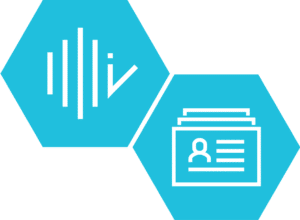What Does Immigration Tech Look Like in 2022?
The value of an agile, comprehensive tech stack during uncertain times cannot be overstated.
Some of the key players include constantly evolving policies and regulations, backlogged cases, and the newer hybrid work challenges that are, by now, unavoidable. If you have any hope of attracting and retaining top talent, it’s imperative for your search to be global and diverse. Employers need to offer remote and hybrid work options to their workers or run the risk of failing to meet demand.
To keep up with these challenges, every professional’s immigration tech stack needs to evolve and grow. Here are some of the main trends we foresee for 2022.
Streamlined immigration processes & workflow automation
A combination of restrictive policies, slow population growth, and the Great Resignation has culminated in a serious worker shortage.
International migration into the U.S. has fallen drastically, with the U.S. census showing that the numbers last year were a mere quarter of what they were in 2016. Much of this can be attributed to changes in immigration policies under the previous administration.
The last decade has also seen a slow growth rate. A dangerous amalgamation of declining birth rates, reduced immigration, and workers leaving their jobs has left the U.S. in a vulnerable situation.
As we set on the course to recovery, organizations with the right technology solutions will find they have an edge over the competition.
Loosening immigration restrictions call for simplified, streamlined immigration processes – such as electronic process simplification to deal with the upcoming flood of immigration cases.
“We’re already seeing a tremendous amount of international talent already in the U.S. shifting between tech companies,” says Sophie Alcorn, Founder of Alcorn Immigration Law. “We have to be ready when embassies and consulates return to full capacity because our clients will want us to work as fast as possible to mitigate their overall case production and processing times given government delays.”

Work visas require a tremendous amount of paperwork, and electronic filing of immigration forms is going to be a must-have in the future. Your company must offer a safe and secure online space for clients to upload, access, and store sensitive documents.
Maintaining compliance can be difficult with the ever-changing rules and regulations for immigration firms. The current climate of heightened federal scrutiny has made it difficult to maintain a balance between immigration compliance and productivity. Here too, automating workflows with the right technology can help your organization by streamlining compliance and decreasing the amount of time spent on menial and repetitive tasks, allowing your employees to spend time on more valuable, client-facing work. “Our clients need us to be human,” says Ms. Alcorn.
“Even when lawyers and staff and clients return to the office and do more work in the same space,” says William A. Stock of Klasko Immigration Law Partners, “those technological tools will enable smoother and more automated workflows that leave lawyers and staff more time to spend doing what clients most appreciate: spending time counseling them through their immigration process.”
DEI commitment is a priority
The pandemic has highlighted the importance of workers’ mental and emotional health and well-being, with diversity, equity, and inclusion (DEI) at the top of every HR departments’ list to promote employee happiness.
Loosening immigration restrictions call for simplified, streamlined immigration processes – such as electronic process simplification to deal with the upcoming flood of immigration cases.
Company culture has become fundamental for more than just attracting and retaining talent – it is becoming increasingly important to clients that the organizations they associate with have these DEI priorities in place. And more importantly, that they act on them.
What does this mean? It means that DEI values matter to your immigration clients, and you should consider (if you haven’t already) implementing holistic, long-term strategies that highlight equity and inclusion. If they find your commitment lacking, you may well see them take their business elsewhere.
“When teams are confident that they can do their jobs with the right tools in place, everybody is happier,” says Ms. Alcorn.
And there’s another perk of having a diverse team – stronger client relationships, as your team is more likely to understand and connect with different types of clients.
Artificial Intelligence
AI is poised to grow its role in 2022, improving efficiency and security across the board. Not only will it play a role in automating administrative tasks, but this type of predictive technology can also be used for various tasks, from recruitment to making intelligent predictive analyses on the success of any case.
“A lot of people are scared that robots will take away their jobs. But AI allows humans to stop doing mindless tasks and focus our attention on the human tasks, such as counseling our clients with compassion,” says Ms. Alcorn.
The fact of the matter is, if your organization isn’t embracing AI-powered analytics, there’s a high likelihood that your competition is.
Paving your way into 2022
A number of factors have left us facing a worker shortage, and these priorities and tools are the best way to ensure you’re offering your clients the best experience possible. If you haven’t done so already, now is the time to implement the technology solutions that can help you navigate the challenging waters of immigration law in 2022.
“Firms need to appreciate that acquiring, rolling out and training staff on a new technology is only the first step, and that adoption and continuous improvement need to continue to be supported,” says Mr. Stock. “Change is hard; cultural change is harder.”
[bctt tweet=” If you haven’t done so already, now is the time to implement the technology solutions that can help you navigate the challenging waters of immigration law in 2022.” via=”no”]




